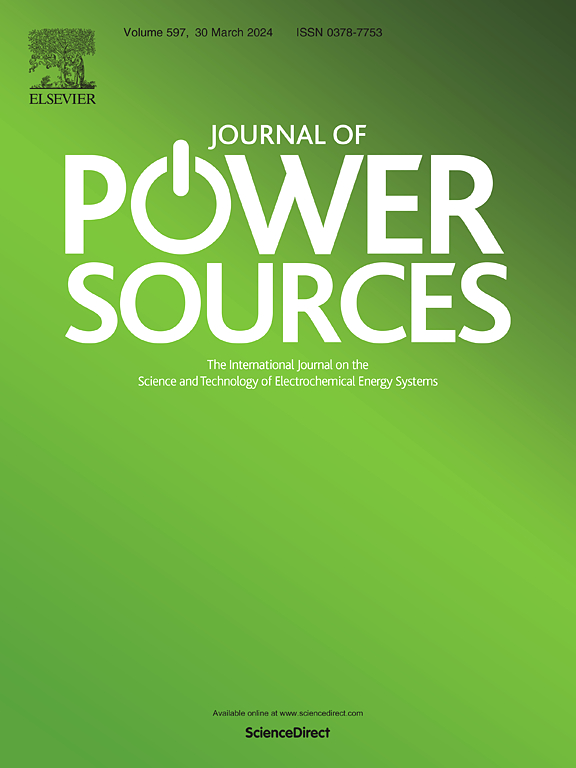Multi-anionic and multi-cationic high-entropy oxides as electrode materials for lithium-ion batteries
IF 8.1
2区 工程技术
Q1 CHEMISTRY, PHYSICAL
引用次数: 0
Abstract
High-entropy materials are promising for using as anode materials for energy storage. Here, the possibility of obtaining single-phase multi-anionic and multi-cationic high-entropy oxides Lix(Co0.2Cu0.2Mg0.2Ni0.2Zn0.2)2-xO2-xFx (0.0 ≤ x ≤ 1.0) with the rock salt structure is investigated. The electrode materials were prepared by the mechanochemically assisted solid-state synthesis and co-precipitation method. The as-prepared anode materials were characterized by X-ray powder diffraction, cyclic voltammetry, galvanostatic cycling, impedance spectroscopy and galvanostatic intermittent titration technique. The maximum x value for obtaining the single-phase materials is 0.5 for two synthesis methods. When used as an anode material for Li+ ion batteries, Li0.5(Co0.2Cu0.2Mg0.2Ni0.2Zn0.2)1.5O1.5F0.5 (x = 0.5) exhibits improved reversibility and kinetics of the electrochemical reactions compared to (Co0.2Cu0.2Mg0.2Ni0.2Zn0.2)O (x = 0.0). Li0.5(Co0.2Cu0.2Mg0.2Ni0.2Zn0.2)1.5O1.5F0.5 obtained by the solid-state synthesis provides the highest reversible capacity of 562.2 mAh g−1 (89 % of the theoretical capacity) with a Coulombic efficiency of 99.5 % during prolonged cycling, while Li0.5(Co0.2Cu0.2Mg0.2Ni0.2Zn0.2)1.5O1.5F0.5 prepared by co-precipitation method and (Co0.2Cu0.2Mg0.2Ni0.2Zn0.2)O prepared by solid-state synthesis and co-precipitation show a reversible capacity of 366.9, 329.9 and 238.7 mAh g−1, respectively.

求助全文
约1分钟内获得全文
求助全文
来源期刊

Journal of Power Sources
工程技术-电化学
CiteScore
16.40
自引率
6.50%
发文量
1249
审稿时长
36 days
期刊介绍:
The Journal of Power Sources is a publication catering to researchers and technologists interested in various aspects of the science, technology, and applications of electrochemical power sources. It covers original research and reviews on primary and secondary batteries, fuel cells, supercapacitors, and photo-electrochemical cells.
Topics considered include the research, development and applications of nanomaterials and novel componentry for these devices. Examples of applications of these electrochemical power sources include:
• Portable electronics
• Electric and Hybrid Electric Vehicles
• Uninterruptible Power Supply (UPS) systems
• Storage of renewable energy
• Satellites and deep space probes
• Boats and ships, drones and aircrafts
• Wearable energy storage systems
 求助内容:
求助内容: 应助结果提醒方式:
应助结果提醒方式:


